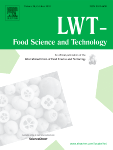View Item
- xmlui.general.dspace_homeCentros Regionales y EEAsCentro Regional Mendoza - San JuanEEA MendozaArtículos científicosxmlui.ArtifactBrowser.ItemViewer.trail
- DSpace Home
- Centros Regionales y EEAs
- Centro Regional Mendoza - San Juan
- EEA Mendoza
- Artículos científicos
- View Item
Inoculation strategies to improve persistence and implantation of commercial S. cerevisiae strains in red wines produced with prefermentative cold soak
Abstract
Prefermentative cold soak is a winemaking technique aimed at enhancing aroma and colour extraction in red wines. This study aimed at evaluating implantation and persistence rates of commercial active dry yeast strains (ADY) in wines produced with cold soak using two different inoculation strategies. Cold soak was conducted at 4 ± 1 °C, 8 ± 1 °C and 12 ± 1 °C for 7 days. Two yeast strains (Lalvin ICV D254 and Lalvin Rhône 2056) were inoculated before and
[ver mas...]
Prefermentative cold soak is a winemaking technique aimed at enhancing aroma and colour extraction in red wines. This study aimed at evaluating implantation and persistence rates of commercial active dry yeast strains (ADY) in wines produced with cold soak using two different inoculation strategies. Cold soak was conducted at 4 ± 1 °C, 8 ± 1 °C and 12 ± 1 °C for 7 days. Two yeast strains (Lalvin ICV D254 and Lalvin Rhône 2056) were inoculated before and after cold soak. Implantation of Lalvin ICV D254 at the end of cold soak was higher when conducted at 8 °C and 4 °C, whereas it was undetectable (<5%) at 12 °C. Lalvin Rhône 2056 showed implantation percentages at the end of cold soak ranging from 40% to 100%, with higher percentages in cold soak conducted at 12 °C. Moderate persistence of ADY at the end of alcoholic fermentation was observed in all treatment inoculated before cold soak. In the treatments inoculated after cold soak, the persistence of Lalvin ICV D254 ranged from 12 to 38% whereas Lalvin Rhône 2056 was less than 5% at the end of alcoholic fermentation. Overall, persistence of both strains improved in inoculation before cold soak relative to inoculation after cold soak.
[Cerrar]

Author
Maturano, Yolanda Paola;
Lerena, María Cecilia;
Mestre, María Victoria;
Casassa, Luis Federico;
Toro, Maria Eugenia;
Mercado, Laura Analia;
Combina, Mariana;
Fuente
LWT - Food science an technology. 97 : 648-655 (November 2018)
Date
2018
Editorial
Elsevier
ISSN
0023-6438
Formato
pdf
Tipo de documento
artículo
Palabras Claves
Derechos de acceso
Embargado
 Excepto donde se diga explicitamente, este item se publica bajo la siguiente descripción: Creative Commons Attribution-NonCommercial-ShareAlike 2.5 Unported (CC BY-NC-SA 2.5)
Excepto donde se diga explicitamente, este item se publica bajo la siguiente descripción: Creative Commons Attribution-NonCommercial-ShareAlike 2.5 Unported (CC BY-NC-SA 2.5)

